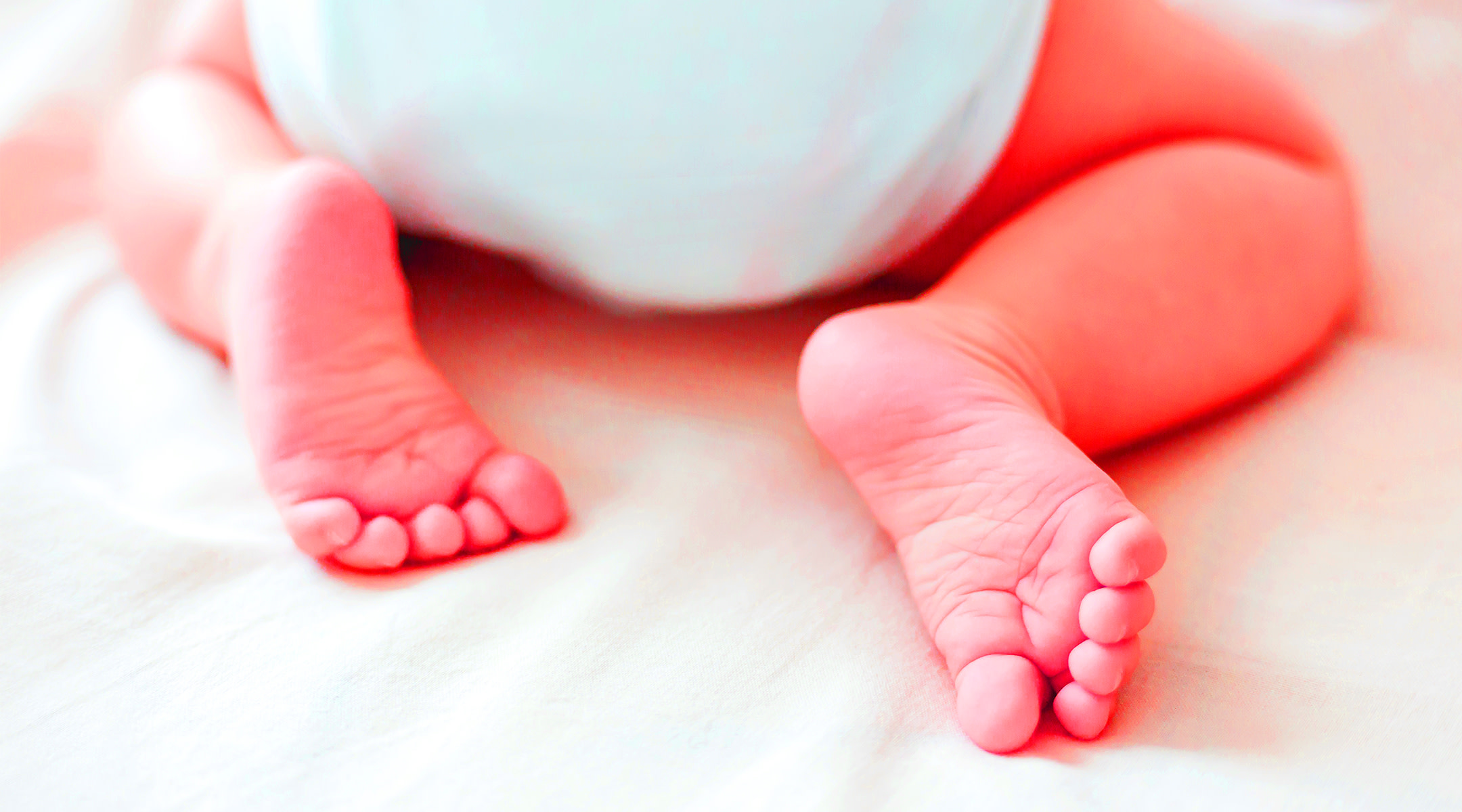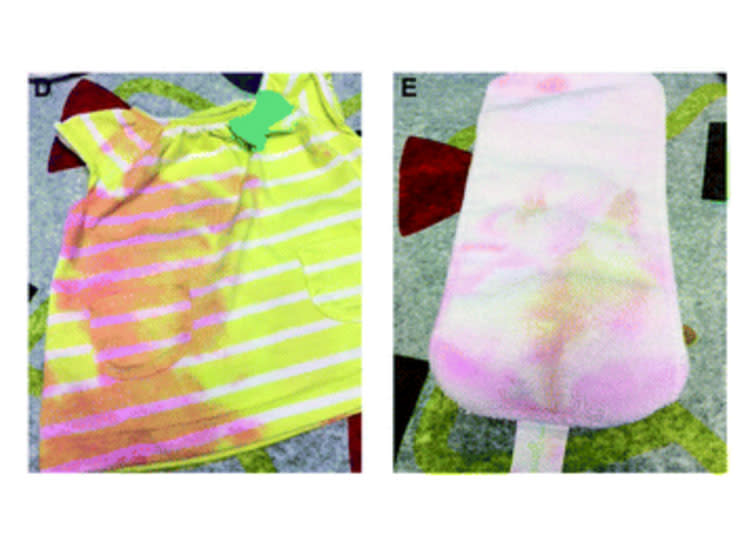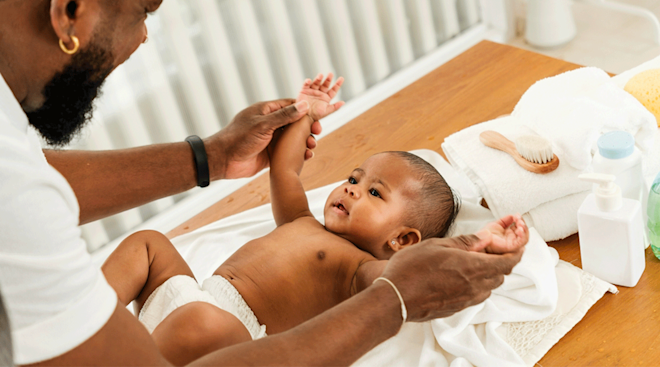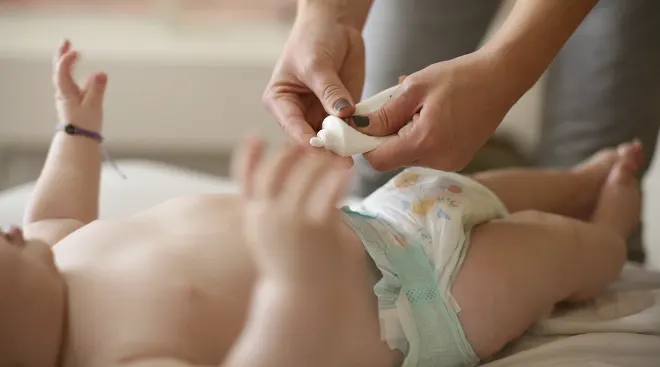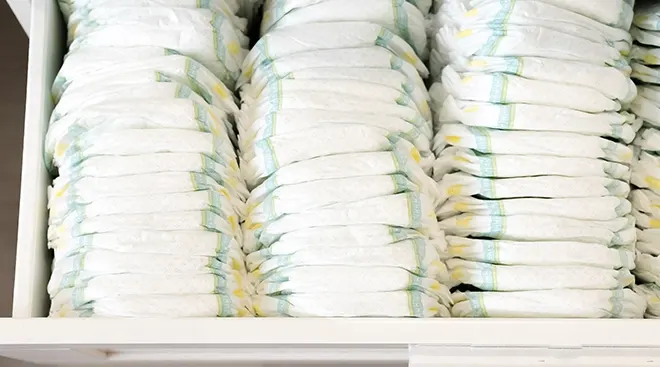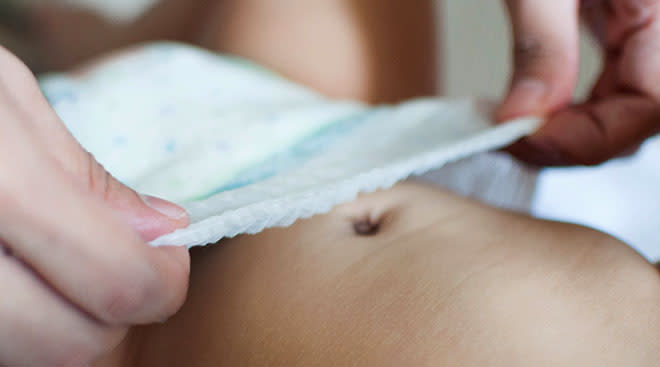It’s rare, but it’s real: Baby’s diaper can turn pink overnight. And so can your nursing pads. But before you panic, no, it’s not because of blood. If you’ve totally ruled out any red foods you’ve eaten as the cause, it may be a case of Red Diaper Syndrome.
Never heard of Red Diaper Syndrome? It’s caused by bacteria called Serratia marcescens. When S. marcescens makes its way into an infant’s gastrointestinal tract, the result is a pinkish reddish diaper that will probably totally freak you out. Even weirder: The pink coloration might not set in on your diapers, clothing or nursing pads until the next day. If that’s the only symptom, though, and it’s not in tandem with any infection, a new study says antibiotics are probably unnecessary, and you’re fine to continue breastfeeding.
The study, published in the journal Breastfeeding Medicine, looked at one specific case report of an 11-week-old baby while reviewing six other existing reports of Red Diaper Syndrome in medical literature. The baby was being treated for fussiness, but was also demonstrating strange symptoms. Any clothing she spit up on or cloth diapers she soiled turned pink after wash. Plus, the mother reported both disposable diapers and nursing pads were turning pink a day after use. Both baby and mom were given a 10-day course of antibiotics called trimethoprim–sulfamethoxazole, during which time the mother stopped breastfeeding. The fussiness improved and the redness stopped. Then the mother resumed breastfeeding—and it started all over again.
With this in mind, researchers looked at the six other mother/baby pairs from the existing reports. Symptoms and treatment varied significantly. While all but one of the mothers reported pink breast milk, only three infants had pink diapers. Only three infants were treated with antibiotics. Some good news across the board, however: None of the infants involved became sick with infections associated with S. marcescens, including bloodstream infection, conjunctivitis, pneumonia, urinary tract infection meningitis, and worse case: sepsis. In fact, other than fussiness in some of the babies, there weren’t really adverse outcomes at all.
“All infants were reported to be growing and developing normally at last follow-up, including those with evidence of continued colonization,” the study says.
Noting the lack of a control group did limit their study, authors were still able to draw a conclusion. All infants and mothers with Red Diaper Syndrome should be evaluated for systemic illness or infection. If there is no infection, antibiotics are not needed, since each baby had a good clinical outcome. And breastfeeding is still encouraged, as long as pumping moms know how to properly clean their pump parts.
Navigate forward to interact with the calendar and select a date. Press the question mark key to get the keyboard shortcuts for changing dates.
































